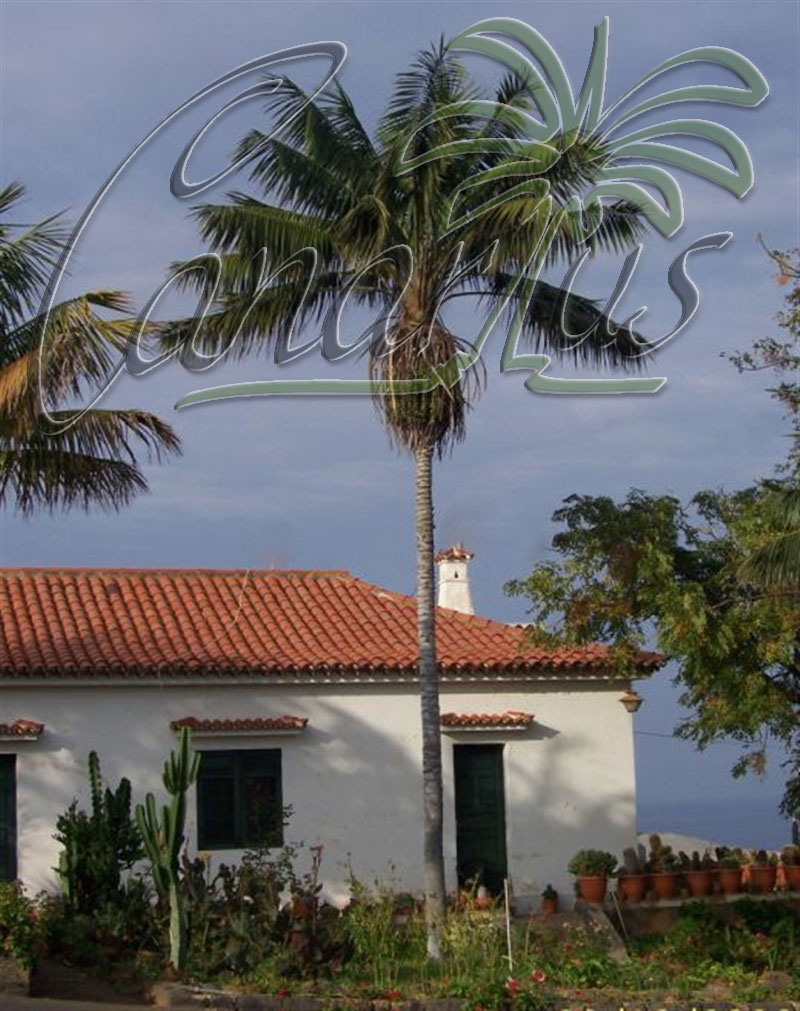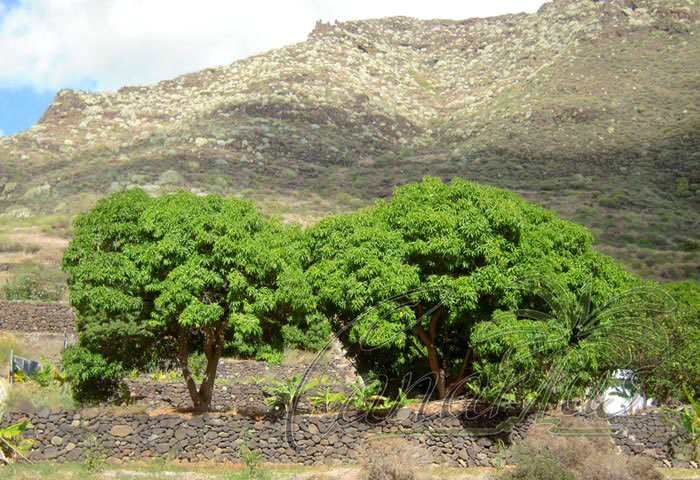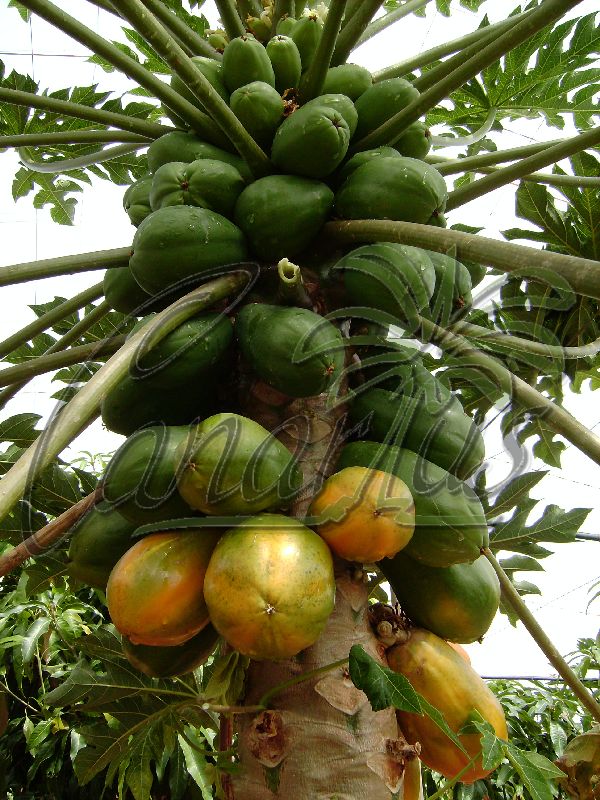Take a tour through a small factory of Cactus jam. Cactus fruits from
Tuno Indio (Opuntia dillenii) are collected in Gran Canaria. They
produce an excellent traditional jam with modern methods. It is in
Spanish.
Tag Archives: Gran Canaria
List of palms of the park of Maspalomas – Palmetum
The Palmetum of Maspalomas
The Palmetum of Maspalomas is a public area of 20.000 m2 devoted to palms, in the dry and sunny South of Gran Canaria.
Palmetum of Maspalomas opened in July 2008 and now hosts a growing collection of rare palms.
This is the list of species of palms growing in the park:
- Acoelorrhaphae wrightii
- Adonidia merilli
- Allagoptera arenaria
- Archontophoenix alexandrae
- Archontophoenix cunnighamiana
- Areca catechu
- Areca lutencens
- Areca triandra
- Arenga australásica
- Arenga engleri
- Arenga micrantha
- Arenga tremula
- Bismarckia nobilis
- Brahea armata
- Butya yatay
- Carpentaria acuminata
- Caryota maxima
- Caryota obtusa
- Caryota mitis
- Caryota urens
- Ceroxilon alpinum
- Chamerops humilis
- Chanbeyronia macrocarpa
- Coccothrinax sp
- Copernicia alba
- Copernicia berteroana
- Cryosophila argentea
- Dictyosperma album
- Dypsis lastelliana
- Dypsis leptocheilos
- Dypsis madagascariensis
- Eleais guinensis
- Gaussia maya
- Howea belmoreana
- Howeia forsteriana
- Hyophorbe lagenecaulis
- Hyophorbe verschafeltii
- Jubaea chilensis
- Jubaeopsis caffra
- Latania loddigesii
- Latania lontaroides
- Latania verschaffeltii
- Livistonia benthamii
- Livistonia chinensis
- Livistonia australis
- Livistonia marieae
- Nannorrhops ritchiana
- Parajubaea torally var. microcarpa
- Parajubaea torally var. torally
- Phoenix canariensis
- Phoenix dactilifera
- Phoenix reclinata
- Phoenix roebelenii
- Pseudophoenix sargentii
- Pseudophoenix vinifera
- Pritchardia hillebrandii
- Pritchardia pacifica
- Ptychosperma elegans
- Ptychosperma macarthurii
- Ptychosperma salomonense
- Raphia farinifera
- Ravenea rivularis
- Ravenea xerophyla
- Rhapis excelsa
- Roystonea oleracea
- Roystonea regia
- Serenoa repens
- Syagrus romanzoffiana
- Syagrus schizophylla
- Trachicarpus wagnerianus
- Trachycarpus takil
- Trithrinax brasilensis
- Thrinax sp
- Veitchia joannis
- Veitchia arecina
- Wallichia densiflora
- Woodyetia bifurcata
- Sabal mauritiiformis
- Sabal palmetto
- Sabal yapa
The collection of palm trees is impressive Maspalomas Palmetum is very interesting.
Parque Botánico Maspalomas en Gran Canaria
Parque Botánico Maspalomas en Gran Canaria
Nice botanical park of 12.000 m2, located Maspalomas, right at the bottom of the hill which takes you to Playa del Ingles, at the end of the golf area. It is open from 10:00-18:00h except from Sundays and holidays. There is no entrance fee.
Palmeras en Maspalomas, Gran Canaria Julio 2009
Palmeras en Maspalomas, Gran Canaria Julio 2009
The camera moves though a neverending grove of tall Washintonia palms, following a rollerskater.
Palmeras Canarias de La Palma, El Hierro y Gran Canaria
Palmeras Canarias de La Palma, El Hierro y Gran Canaria
Still pictures of old and tall specimens of Canary Islands Date Palms (Phoenix canariensis). Nice music purposely composed for this video.
Cactualdea en Gran Canaria
Cactualdea en Gran Canaria
A privately owned cactus park located in Gran Canaria with more than 1.000 species in the collection.
The Canary Islands
The Canary Islands are an archipelago of volcanic origin, consisting of seven major islands, one minor island, and several islets. They are located in the North Atlantic Ocean, off the coast of the Africa, near Morocco and Western Sahara. They are part of Spain, as the autonomous community of the Canary Islands.
There is a mild, oceanic climate, spectacular volcanic landscapes, unique endemic nature and excellent Canarian Food and Cuisine.
The islands lived an interesting history, from the first aborigines, through colonial times, to the modern society and the recent decades of global tourism. Older architecture is well conserved on most islands and the city of La Laguna in Tenerife is a World Heritage Site.
Tenerife is the largest island, with about one million inhabitants; the island of Fuerteventura is the second in size, then Gran Canaria. There are two provinces: Santa Cruz de Tenerife is the capital city of the Western Islands and Las Palmas de Gran Canaria the capital of the Eastern Islands.
All the islands are volcanic in origin. All except La Gomera have been active in the last million years. The Teide volcano on Tenerife is the highest mountain in Spain and one of the largest volcanoes on an island.Coordinates are about Lat. 28°N and Long. 15°W.
The climate is oceanic and relatively mild. It is Subtropical to Mediterranean at lower altitudes and Temperate to Alpine at higher elevations, where conspicuous snowfalls occur regularly. The NE trade winds keep cooler summers and cause a major difference between the Northern and Southern slopes of the highest islands. Northern coasts are cooler, cloudier and rainier, while the South is drier, sunnier and warmer. Local climate can be very wet or very dry in some parts of the islands.
Local nature is marvelous, endemic and endangered. Four of Spain’s thirteen national parks are located in the Canary Islands: Parque Nacional de la Caldera de Taburiente in La Palma, Garajonay National Park in La Gomera, Teide National Park in Tenerife and Timanfaya National Park in Lanzarote.


















